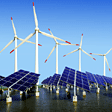- Home >
- Our Actions >
- Ambassador report
3
Comments
CLIMATE CHANGE AND FOOD SECURITY OF NEPAL |
|---|
|
Climate change is the natural phenomenon mainly connected with the changes in the concentration of greenhouse gases (h20, CO?, CH4, N?sub>2O, SO2 and CFCs) and they trap the infrared radiation in the earth surface which cause to rise in air temp, precipitation pattern, sea level rise, melting of glaciers etc. human activities are most responsible as fossil fuel combustion, industrial processes. Evidence as vegetation, ice core, tree ring analysis, sea level change, glacial geology. Global mean surface temp. is globally projected to increase by 1.1-6.4oC by 2100 along with sea level rise of 18cm-59cm. affect on Nepal can be studied through Himalayas (snow content of Himalayas), drought, floods, hailstone, inundation of standing crops, khumbu glacier retreating(100m) also GLOF (5 lakes outburst 1977-1988). Food security as connected to the availability, access and utilization of the nutritious food to meet the dietary need (FAO). As the food insecure country, food shortage and price hikes results 3.8 million people danger on food insecurity as UN WFP suggest 40 % population undernourished showing the direct effect in 38 districts mainly mid and far western along with grain bowl(Terai) showing food deficits. C3 plants yield better at 15oC whereas C?sub>4 @ 30oC, increased temperature has shown sterility problem in rice and tillering with low biomass accumulation in wheat. Reduced agricultural land due to submergence (topics), drying in the sub-tropics and also 15-16% yield loss in every 1oC rise in seasonal temperature. Though rise in CO2 conc. Suspected to be 550 ppm by 2100 (379 now) contribute 10-20% along with improve the water use efficiency. Snow melting on Himalaya?s result the availability of agriculture and pastoural land subsequently rise in sea level. Unstable weather condition as flooding, landslides, drought, and inundation of standing crops affects the agricultural land and its productivity along with increased disease susceptibility from vector, water, food-borne disease, food poisoning in temperate decrease the labor productivity due to low availability of the nutrition affecting the economy. Using mitigation measures as low carbon technology, alternative energy etc adoption measure as irrigation facility, improving crop varieties, weather projection etc along with policy from government as targeted program on farmers and higher level study, policies can help the problem. |
|
|










 Previous : Eco Workshop for School Kids
Previous : Eco Workshop for School Kids









3 Comments
Climate change due to global warming , indeed , has an adverse impact on agricultural production and many other critical aspects of life. Thanks for highlighting the concern here , Sabin.
Posted 09-02-2015 01:01
Well written Sabin. The agriculture & climate change are closely related & complementing to each other.
Posted 07-02-2015 17:16
Although we can't feel the consequences of global warming in our daily lives, for those who are vulnerable to the climate change, it's fatal. I am so sorry that I may have been contributed to the increasing temperature. Thank you for sharing the detailed information about the relationship between agriculture and climate change.
Posted 03-02-2015 18:12